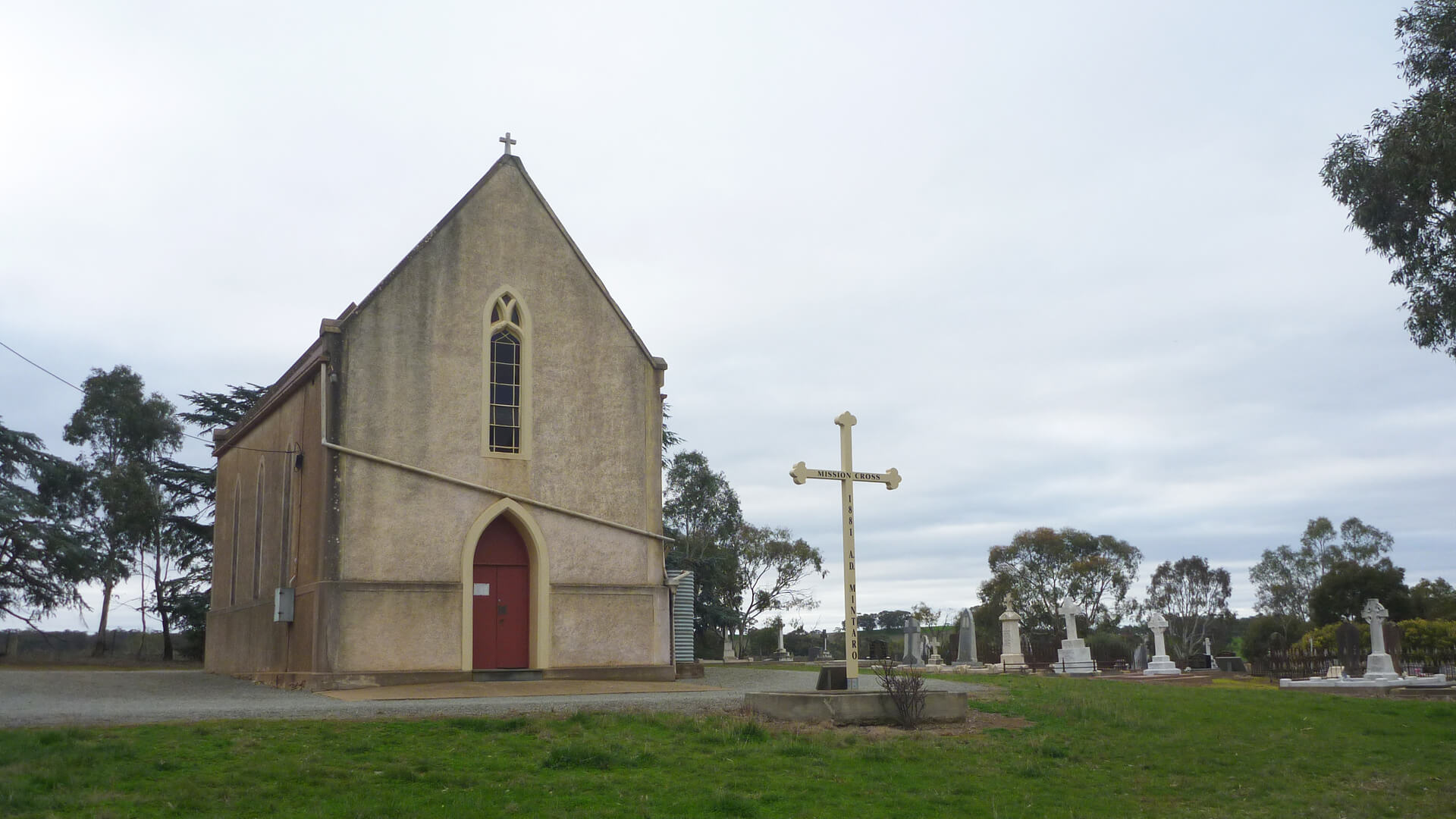In 1851 Peter and Bridget Brady purchased an 80-acre section and offered Fr Kranewitter SJ, an Austrian Jesuit priest, the use of their small cottage for Sunday Mass. Over time with the village growing, a need became apparent for the district’s Catholic population to have its own church.
On April 24th, 1855, Peter Brady transferred two acres of his land to Bishop Murphy on which to construct a new Catholic Church.
On June 7th, 1855, the foundation stone was laid by Bishop Murphy for the Church of the Immaculate Conception, the first church in Australia to be given this title.
With the hard work of the parishioners, assisted by Fr Kranewitter and the help of Mr Thompson Priest, a local stonemason, the new church was completed and officially blessed and opened by Bishop Murphy on the 23rd of November 1856.
It remains the oldest, extant Jesuit Church in Australia.[1][2]
The church is built of local stone and was built by local men who quarried, sorted and carted the stone. Father Kranewitter and his companions and also Thompson Priest, a local stone mason and stone cutter, helped in building the church. The stain glass windows bear the names of the early parishioners—Peter and Bridget Brady, Michael Tobin, Mary Smith, W.E. & H. Giles, T. Dempsey and G. Faulkner.
Changes to the church over the years have included a polished wooden ceiling, in 1906, and in the 1920s the flagged slate floor was replaced by wooden flooring. In 1938 the church was fully renovated at great expense. Well attended masses and a reunion of past and present parishioners raised sufficient money to cover the costs of these renovations. Further changes to the interior of the church were made in the 1960s.
When Father Ragalski was serving Mintaro in 1881 a Mission Cross was erected to commemorate a mission held in that year. A replica of the Mission Cross, built and erected by local, Shawn Deal, was blessed by Father Chris Jenkins in 2021.
The centenary of the Church of the Immaculate Conception was celebrated on Sunday 25 November 1956 with a mass at the church, followed by lunch at the Mintaro Institute. Mass and celebrations to commemorate 150 years since the building of St. Mary’s Church Mintaro were held also, in 2006.
From 1872 the Sisters of St. Joseph provided education to the catholic children of Mintaro, initially using the church building. Many of the pews used today have holes for inkwells. The school closed in 1890, only to reopen in 1925, along with a new convent for the Sisters. The school closed permanently in 1957. A plaque marks the site of the convent and commemorates the work of the Sisters of St. Joseph in Mintaro.
Mintaro Catholic Cemetery is located on the eastern side of the church and is the burial place of many pioneering catholic families. The cemetery is still in use.
St. Mary’s Mintaro continues to be served by the Jesuit priests from the Sevenhill Parish. Mass is celebrated on the second Sunday of each month at 12.00.

